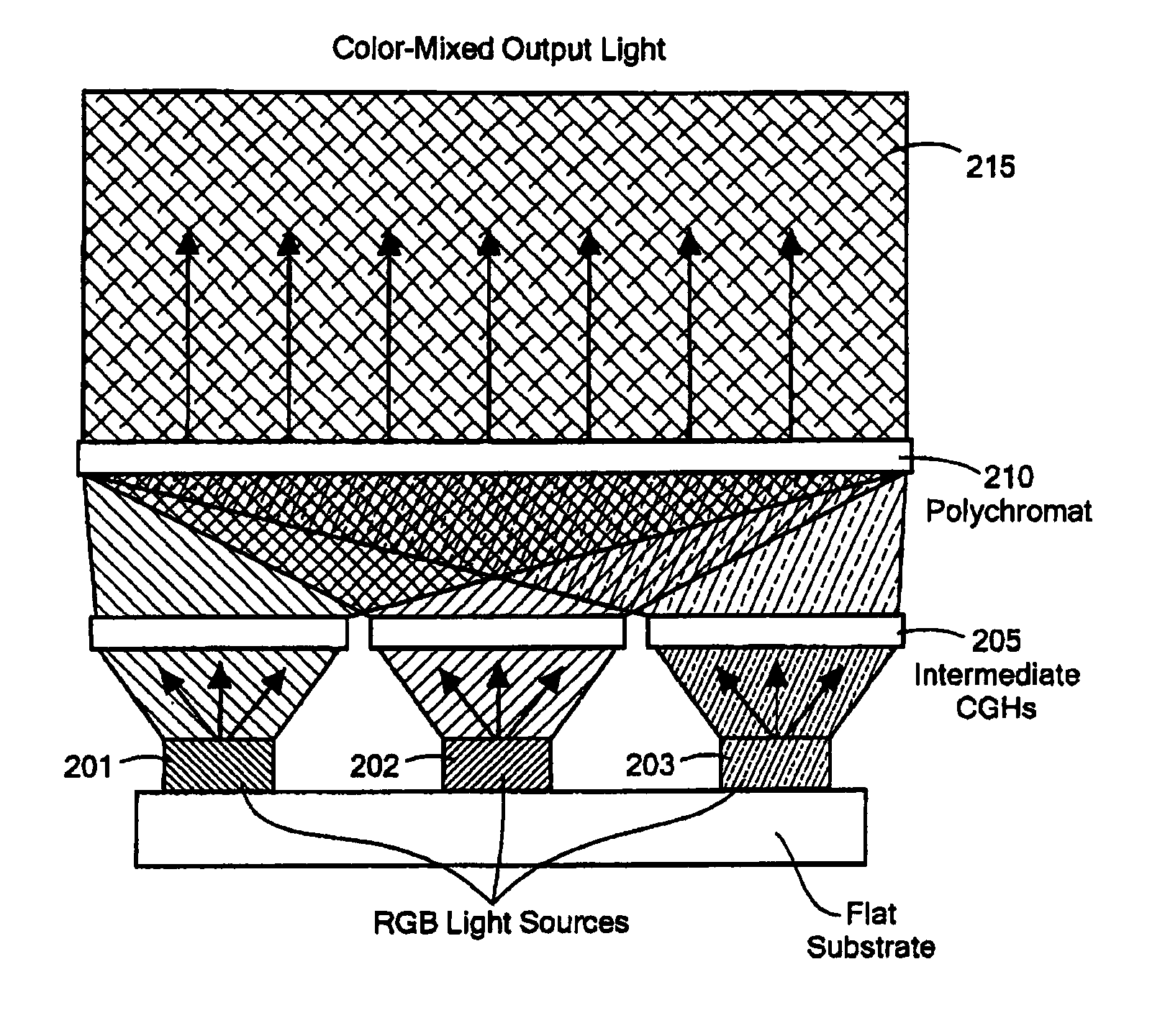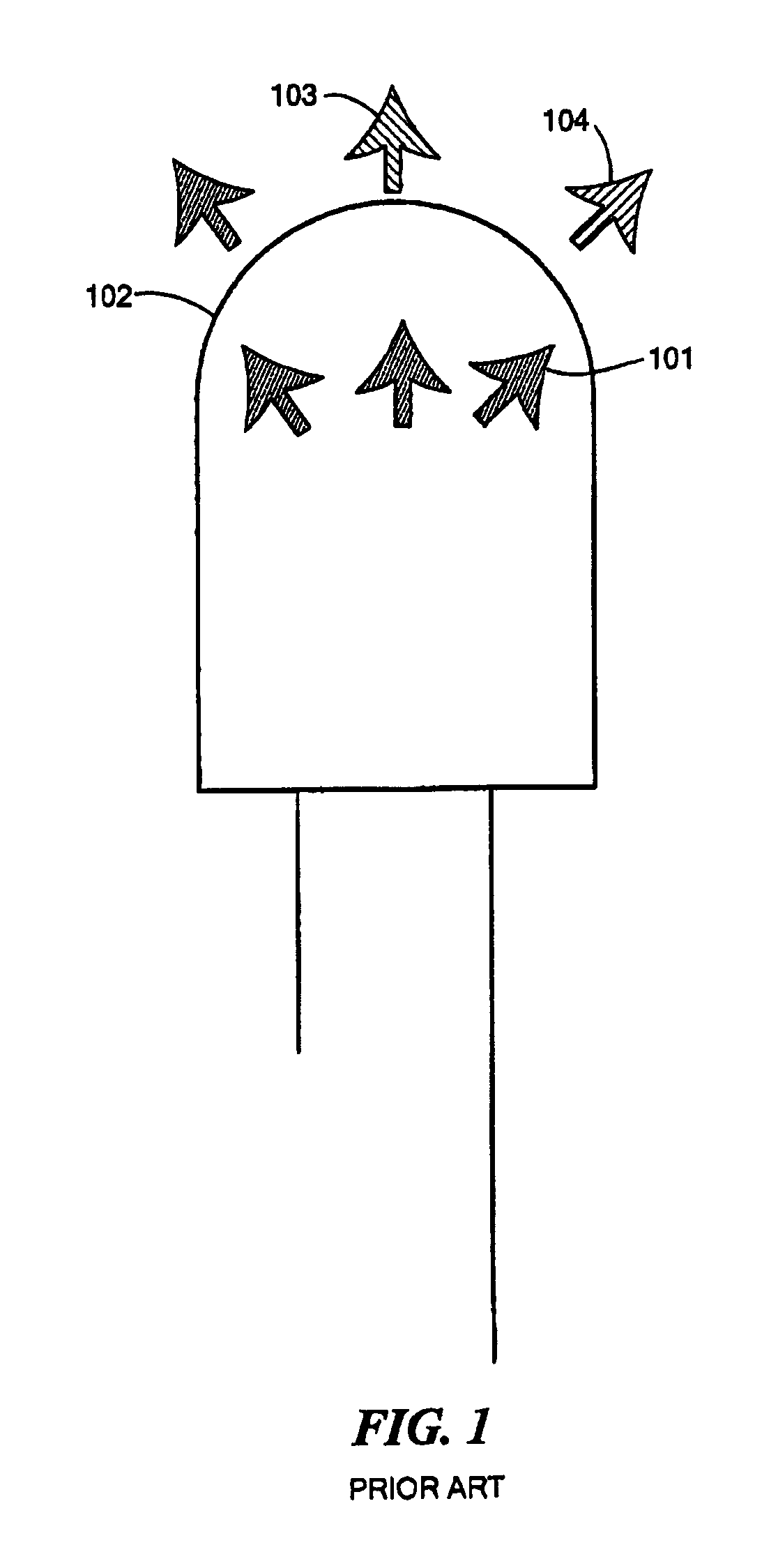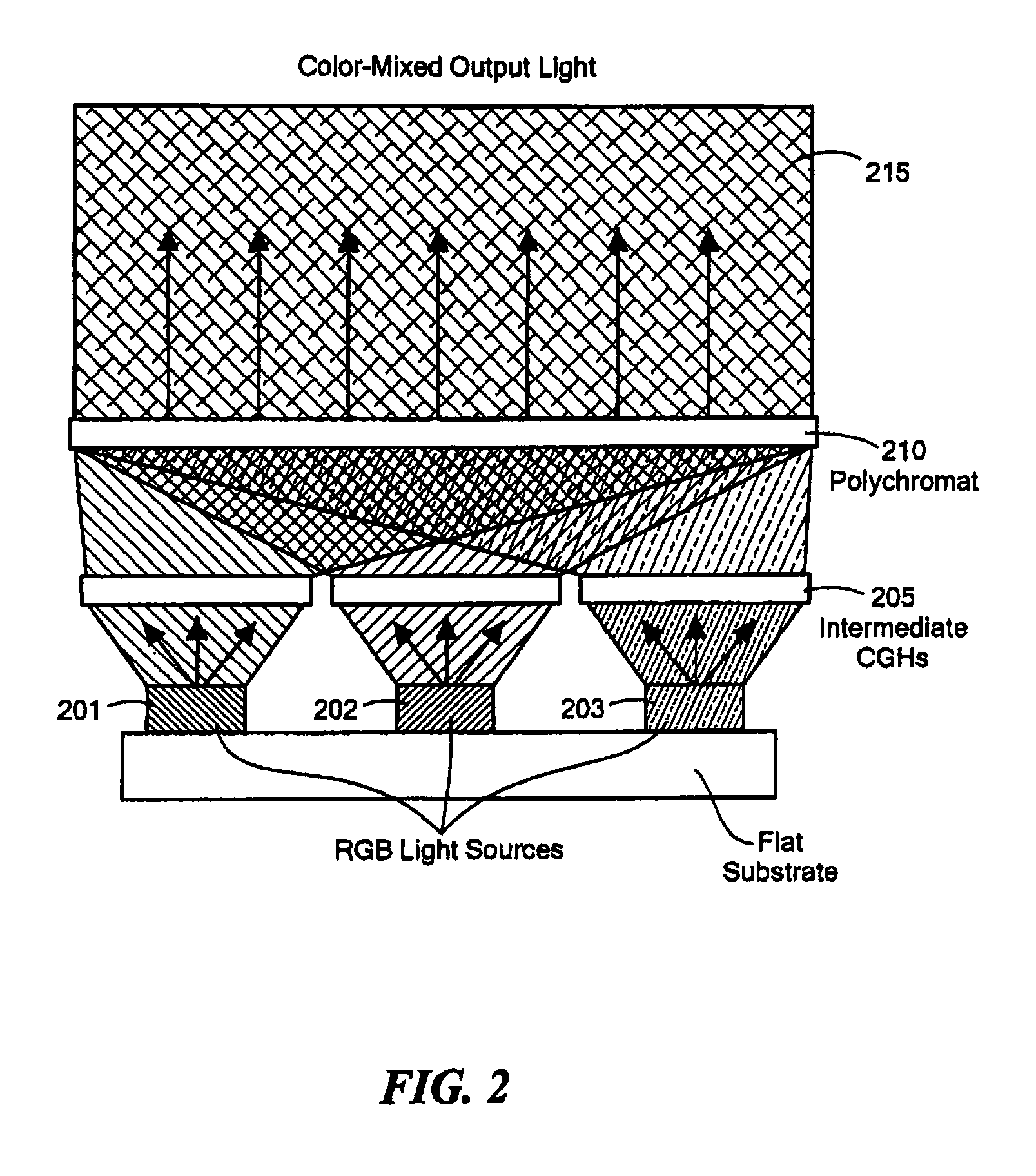Ultra-high efficiency color mixing and color separation
a color mixing and ultra-high efficiency technology, applied in the field of polychromatics, can solve the problems of phosphors deteriorating, affecting the adversely affecting the color output lifetime and overall efficiency of the device, and overall device efficiency being lower than normal 3-color led system, so as to achieve efficient color mixing in lighting
- Summary
- Abstract
- Description
- Claims
- Application Information
AI Technical Summary
Benefits of technology
Problems solved by technology
Method used
Image
Examples
Embodiment Construction
[0009]Embodiments of the invention provide for the use of a polychromat, in conjunction with color light sources such as light-emitting diodes, for very efficient color mixing in lighting, display, spectroscopy, and related applications.
[0010]In accordance with preferred embodiments of the present invention, a color-combining apparatus is provided that has a plurality of sources of illumination, each source of illumination emitting a beam characterized by a distinct spectral range. Together, the beams are said to constitute a set of beams. The apparatus also has a polychromat for adapted defining light output properties in at least one volume upon illumination of the polychromat by the plurality of sources of illumination.
[0011]In various embodiments of the invention, the polychromat is adapted to define light output properties not only in one volume but in a plurality of volumes upon illumination of the polychromat by the plurality of sources of illumination. The light output prope...
PUM
| Property | Measurement | Unit |
|---|---|---|
| size | aaaaa | aaaaa |
| size | aaaaa | aaaaa |
| size | aaaaa | aaaaa |
Abstract
Description
Claims
Application Information
 Login to View More
Login to View More - R&D
- Intellectual Property
- Life Sciences
- Materials
- Tech Scout
- Unparalleled Data Quality
- Higher Quality Content
- 60% Fewer Hallucinations
Browse by: Latest US Patents, China's latest patents, Technical Efficacy Thesaurus, Application Domain, Technology Topic, Popular Technical Reports.
© 2025 PatSnap. All rights reserved.Legal|Privacy policy|Modern Slavery Act Transparency Statement|Sitemap|About US| Contact US: help@patsnap.com



